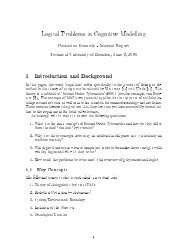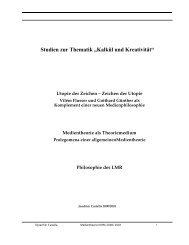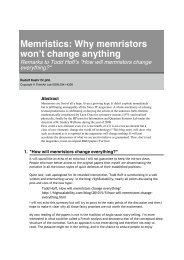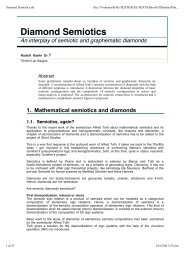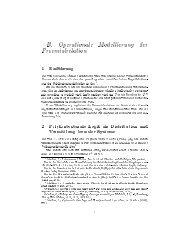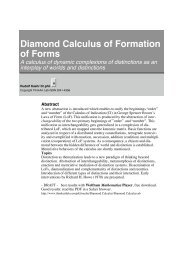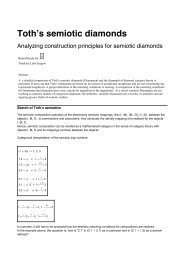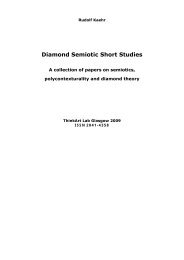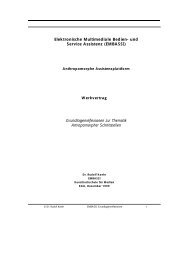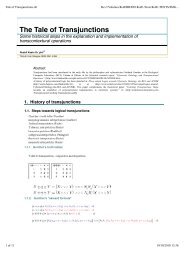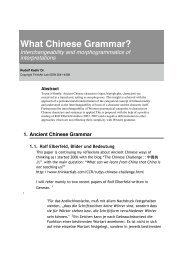Catching Transjunctions - ThinkArt Lab!
Catching Transjunctions - ThinkArt Lab!
Catching Transjunctions - ThinkArt Lab!
You also want an ePaper? Increase the reach of your titles
YUMPU automatically turns print PDFs into web optimized ePapers that Google loves.
<strong>Catching</strong> <strong>Transjunctions</strong>.nb<br />
file:///Volumes/KAEHR/HD-KAE-Texte/KAE-TEXTS/Publi...<br />
Each logical AND is emulated by memristive devices, memristors only or mixed with other<br />
mem-capacitators, mem-inductors, as Di Ventra et al defined and simulated it. Such memristive<br />
constructions are not yet focused on the time- and history dependence of the used memristors.<br />
A new use of memristors enters the theater whith the interactions between memristors of<br />
different domains. This mechanism of connecting different domains happens in the mode of<br />
chiasms which are defined by their retro-grade properties.<br />
Hence, memrisor-based logical junctions are mediated by memristive elements exploiting their<br />
memristive features of retro-gradeness. Hence, the focus on the roles of memristors are<br />
different, on a first-level interpretation, memristors are defining junctors without any<br />
involvement in retro-gradeness. On a second-order level, the memristive property of retrogradeness<br />
o the behavior of memristors is in the focus and utilized for the mediation of<br />
memristive structures of different loci (domains).<br />
2. Modeling and emulating logical operators<br />
2.1. Modeling and emulating material implication<br />
Lehtonen’s example for the emulation of material implication with two memristors and 1<br />
resistor only.<br />
2.2. Memristive modeling and emulating of logical functions<br />
2.2.1. Di Ventraʼs physical model<br />
10 of 26 15/10/2010 19:01



